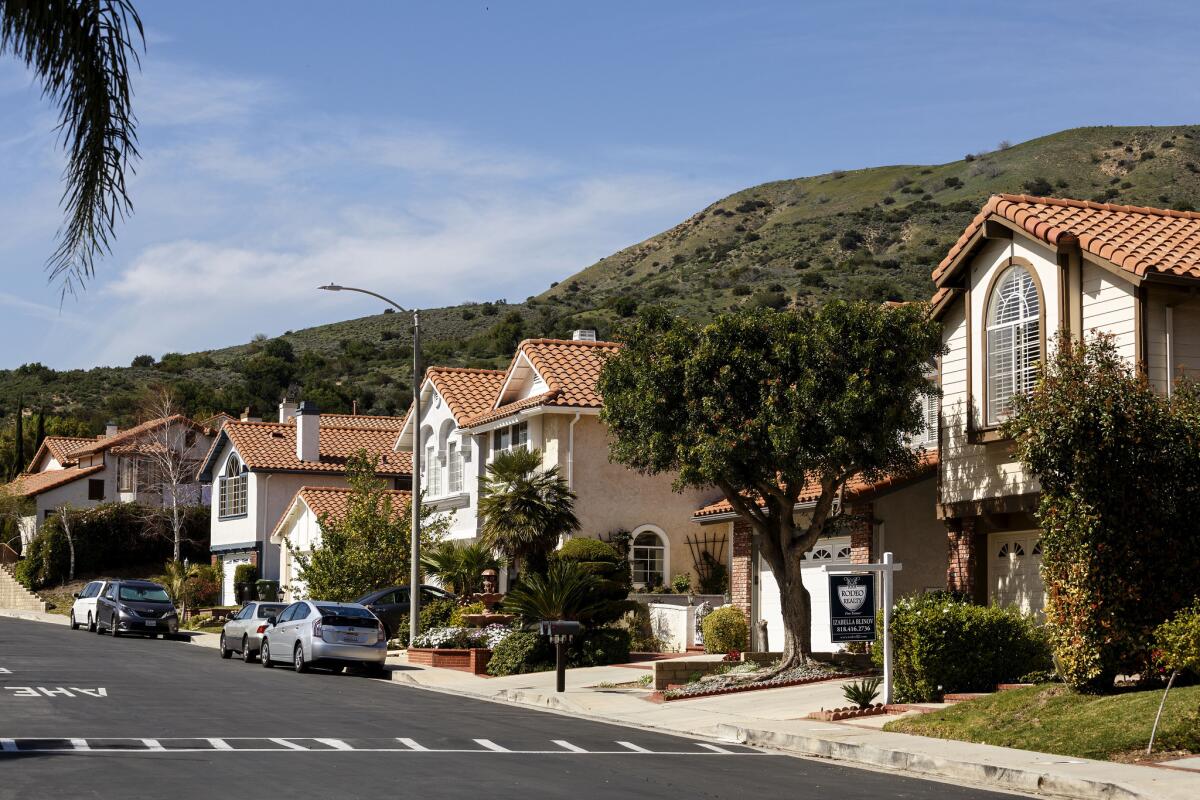Porter Ranch’s future after massive gas leak is in the eye of the beholder

- Share via
In the hills above the 118 freeway, mansions are being built. Restaurants and grocery stores are packed. Cyclists pedal up and down wide-open streets.
On the surface, the community of Porter Ranch is returning to normal four months after the largest methane leak in American history was capped in the nearby Aliso Canyon natural gas storage field. The leak, which started in October, released more than 97,000 tons of methane into the atmosphere and was so massive it could be seen from space.
But fears about property values and future gas leaks have cast a shadow.
It’s never going to be the same, because now we know the full extent of the threat.
— Porter Ranch resident Susan Gorman-Chang
“It’s never going to be the same, because now we know the full extent of the threat,” Susan Gorman-Chang said recently while campaigning for a seat on the Porter Ranch Neighborhood Council.
Her family was among the thousands who evacuated when odorants from the methane leak began to cause headaches, nosebleeds and nausea.
The relocation program had cost Southern California Gas Co. nearly $465 million as of March 31, according to the most recent available company filing with the U.S. Securities and Exchange Commission. Part of that money went toward the cleanup of about 1,500 homes.
The program ended June 13, by which time most residents had returned to Porter Ranch — good news for retailers who saw a drop-off as a result of the four-month-long leak. According to spokeswoman Yolanda Stokes, the U.S. Small Business Administration has approved $879,000 in disaster-related loans for business owners in the community.
But questions remain about how the leak will affect property values in Porter Ranch, particularly in the long term.
Home sales dropped 44% in the three months after the leak was reported, according to data provided by RealtyTrac. However, the median sale price increased 5.7%, and the number of cash purchases jumped 50%.
See the most-read stories in Local News this hour >>
“For lots of these folks, their homes are their biggest assets,” said attorney Paul Kiesel, one of the more than 80 lawyers representing clients in cases against Southern California Gas Co.
“There are residents who are uncertain about what the property values are going to be like in the future.”
The decision to buy in Porter Ranch will probably be similar to the decision to relocate, said Jamie House, who lives near the gas field and has seen traffic congestion pick up as neighbors return.
“I feel like there are going to be people who are like, ‘It’s fine. It’s not a big deal. There’s going to be something everywhere you go.’ And there’s going to be people who think this is a really huge deal,” House said.
Developers, however, seem optimistic that Porter Ranch’s location and schools will be enough to draw buyers.
A subdivision under construction, with properties going for as much as $1.8 million, has homes that boast city views and infinity swimming pools.
The gas leak is important, but it’s not the only problem we have.
— Resident David Lasher
At a recent ribbon-cutting ceremony, Los Angeles City Councilman Mitch Englander said the construction was a sign Porter Ranch was regaining its footing. Two days later, he hosted a welcome home party for families at Holleigh Bernson Memorial Park, which not long before had been coated in oil from the leak.
“It’s absolutely symbolic,” Englander said. “We are starting to get back to the great community we are.”
To members of the group Save Porter Ranch, however, it would be a better community without a natural gas storage field behind their homes.
“We’re not haters. We’re concerned citizens. We’re not fear mongering — we’re stating facts,” said Jennifer Milbauer, a recently elected member of the neighborhood council.
In part to address those fears, state Sen. Fran Pavley (D-Agoura Hills) has introduced SB 887, which calls for improved safety oversight and maintenance of gas wells. Specifically, the bill would set minimum standards for inspections and require subsurface safety values.
Join the conversation on Facebook >>
“We continue to learn from this horrible, perhaps preventable, accident and we’re working very hard to minimize any risk to the residents,” she said.
That element of risk, however, is accepted by many people in Porter Ranch as a new normal.
“There are so many wells up here, it just seems like it’s probably a matter of time before it happens again,” resident Brad Gilmore said recently as he walked his dog in the park. “The fact is, it’ll happen again. There’s too many of them and they’re too old to hold up forever.”
The clearest sign that things are returning to the way they were before the leak may be residents’ complaints about quality-of-life issues.
“The gas leak is important, but it’s not the only problem we have,” said David Lasher, citing residential burglaries, illegal street racing, litter and overgrown trees — a problem that one City Hall staffer suggested Lasher should take care of himself.
“I don’t pay my taxes so my councilman can tell me to become a volunteer tree trimmer,” Lasher said.
Twitter: @TheCityMaven
MORE LOCAL NEWS
Twenty-two years after Northridge quake, hope for a Panorama City neighborhood
L.A. County to consider putting parcel tax for homeless initiatives on November ballot
Paradise Cove in trouble again for charging for beach access
More to Read
Sign up for Essential California
The most important California stories and recommendations in your inbox every morning.
You may occasionally receive promotional content from the Los Angeles Times.














